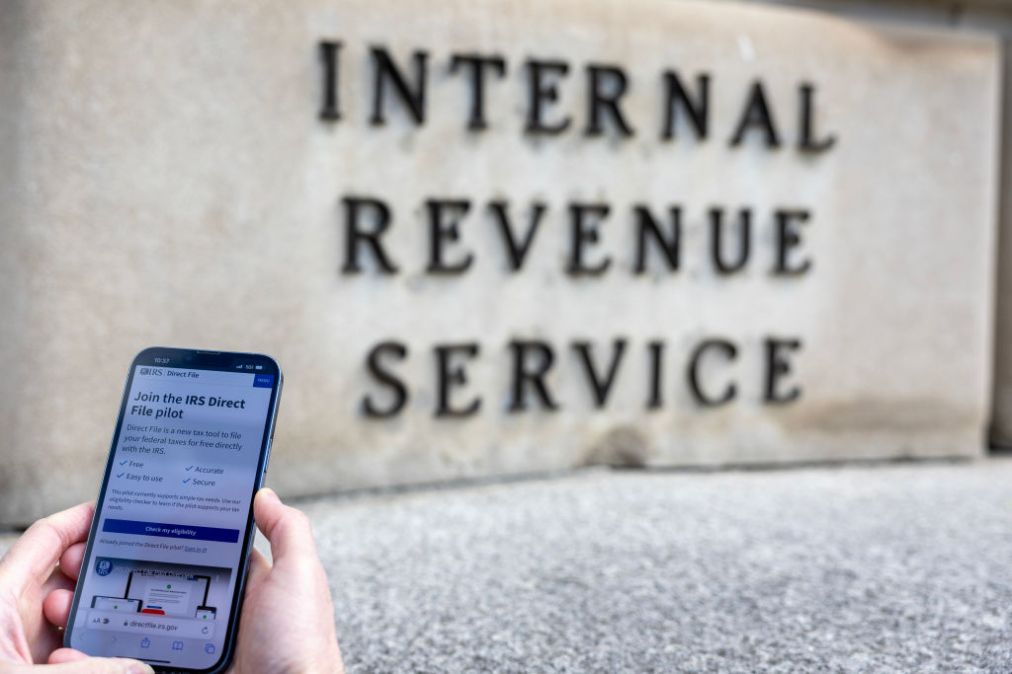How the IRS’s ‘cautious’ approach with Direct File prevented its ‘failure’

The way Merici Vinton tells it, the first official user of the IRS’s Direct File pilot nearly had tears of joy in her eyes when she submitted her return to the free electronic filing program, a milestone for the tax agency and a potential game-changer for frustrated taxpayers across the country.
There was only one problem: a bad connection that resulted in that maiden filer’s return getting stuck in a queue.
“This would have been a failure,” said Vinton, deputy service owner for Direct File. “And not just a failure — our users wouldn’t have had trust in it.”
The reason it wasn’t a failure is that the Direct File team noticed the issue right away, resetting the connection to quickly free the return from its digital abyss. And thanks to a controlled rollout to only a limited cohort of volunteers and government employees, the system’s inauspicious start was a blip and not a death knell.
In recounting the Direct File origin story Wednesday during a President’s Management Agenda event in Washington, D.C., Vinton said the “cautious” approach favored by IRS Commissioner Danny Werfel was the right move — and set the program up for a level of success that earned it permanent status.
“We would only proceed in opening it up to larger, more progressive audiences when we were confident in the product’s ability to scale,” Vinton said. Maintaining the trust of users “is what drove the decisions on how we proceeded.”
Chris Given, Direct File’s product lead, recalled an early meeting with Werfel in which the commissioner set relatively simple goals for the team: aim for tens of thousands of participants, avoid taking big risks and focus on “executional certainty.”
“And I remember I walked out of that meeting like positively euphoric,” Given said. “For once, I have a stakeholder who I do not have to convince to not do everything and more.”
At the end of the filing season, Werfel’s objectives were met, with more than 140,000 taxpayers in the pilot states — Arizona, California, Florida, Massachusetts, Nevada, New Hampshire, New York, South Dakota, Tennessee, Texas, Washington and Wyoming — using Direct File. The IRS received more than $90 million in refunds and reported $35 million in balances due.
The agency’s ensuing victory lap was only possible thanks to ongoing behind-the-scenes work from the Direct File technical team. Vinton said there were more than 1,000 fixes or improvements made to the system after launch.
One early problem identified by the product team involved taxpayer inputs for adjusted gross income and identity protection PIN. Users either didn’t know that information or were misentering it, leading to a “rate of rejections that was higher than what we wanted to see,” Vinton said.
The explanation for those bad inputs was simple: other tax software carried over those values from year to year, but Direct File was starting from scratch. With about two weeks remaining in the filing season, the product team addressed the problem by importing the previous year’s adjusted gross income into each filer’s return.
“Overnight, we saw a 25% reduction in … reject rates,” Vinton said. “So that is a great example of a win for taxpayers.”
Other wins from a product standpoint included knowing when to walk away from something that wasn’t working. Given pointed to an eligibility checker that asked taxpayers a series of questions upfront — which state they lived in, what their income was, etc. — to determine if they were cleared to participate in the Direct File pilot. The first iteration of that checker was, according to Given, “a disaster.”
“We had built an experience that very much wanted to catch as many things as possible as early as possible, and it had very detailed questions that you had to answer in order to move on to the next step,” he said. But “there was a big disconnect between what the experience of the eligibility checker was and what the experience of the product was once you actually got into it.”
The “intensive process upfront” wasn’t setting the right expectations for the actual filing process, Given said, so that version of the checker was scrapped and the team explored how to simplify the process.
“We have to do the right thing by taxpayers,” he said. “We don’t want anyone to leave money on the table. But we also have to set the experience expectations right.”
Though a House Republican effort in the appropriations process to zero out Direct File looms in the background, the IRS product team is working full steam ahead on expanding the program to all 50 states for the next filing season and tweaking the system “to support most common tax situations, with a particular focus on those situations that impact working families.”
Direct File was built as a standalone product totally separate from the agency’s website, Given noted, meaning any subsequent work on the filing tool has no impact on the IRS’s ongoing modernization efforts.
That siloed approach means that the expansion of services can also be paired with all sorts of experimental new features, such as notifications to filers that may be eligible for SNAP benefits or Medicaid or child care subsidies, Given added. It’s all part of an overarching strategy with Direct File to alter how taxpayers view the agency’s services.
“One of the key ideas there was to change the relationship that you have with the IRS, to change that from a role of the IRS telling you you got it wrong, to the IRS being in a role of helping you get it right from the start,” Given said. “And that was a real shift that we wanted to make with this service.”

